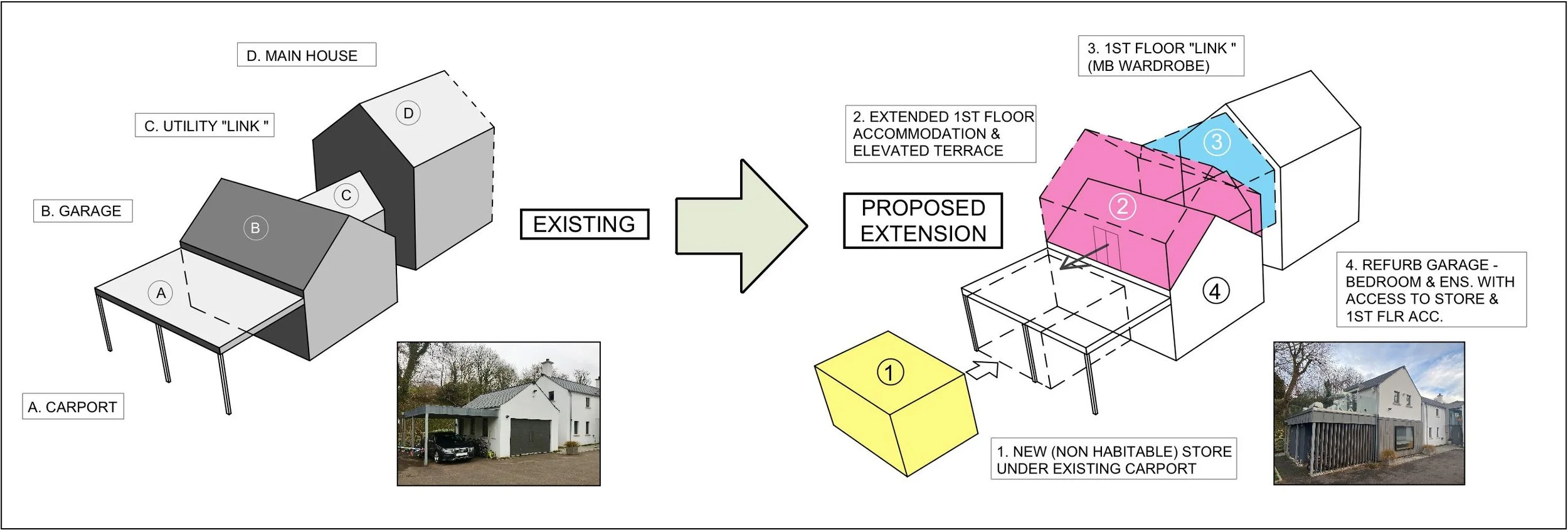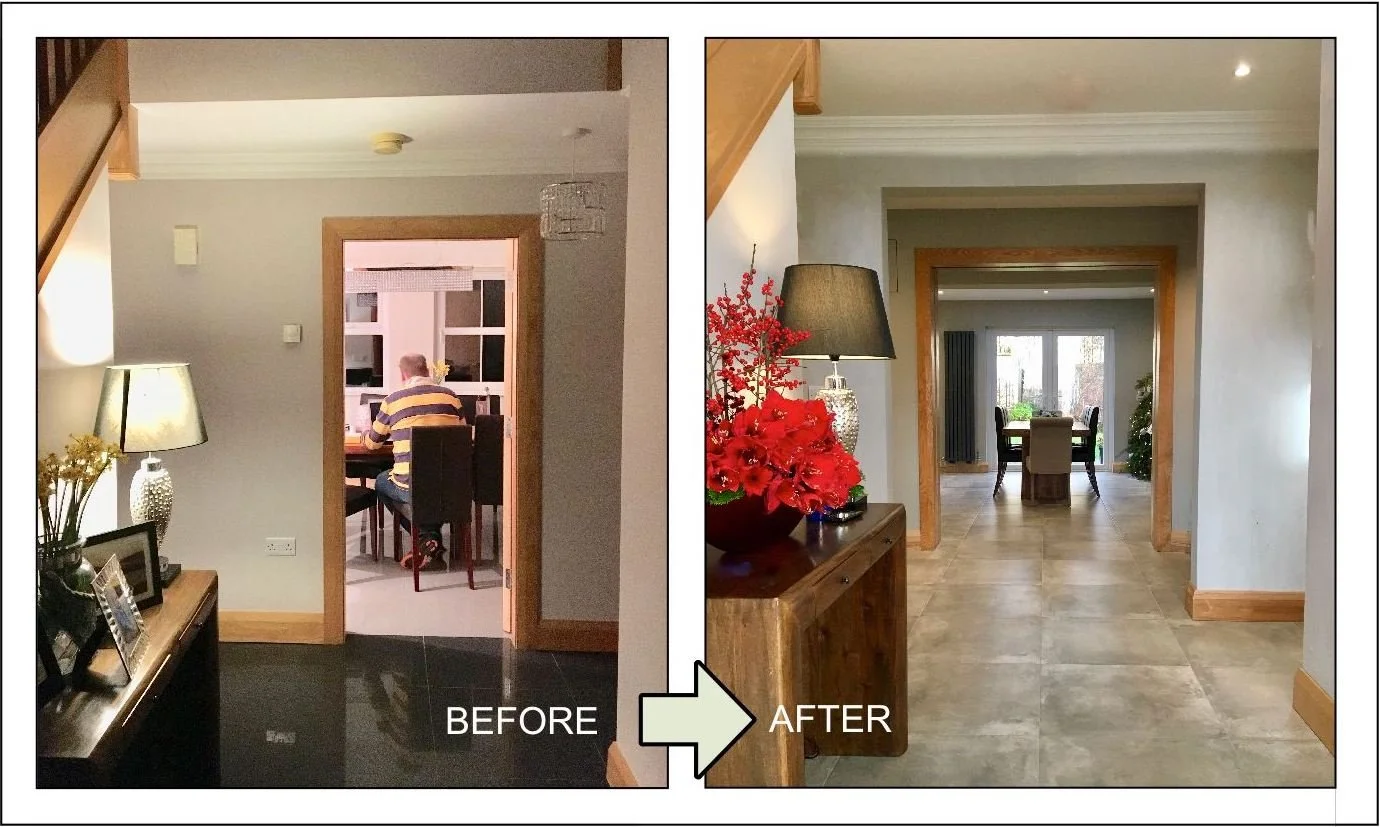Extensions: When to Build Big and When to Build Smart
When a family decides their home no longer fits their lifestyle, the first instinct is often to think bigger. A larger kitchen, an extra bedroom, a spacious living area – more square metres surely means a better home, doesn’t it?
Not always.
In my experience as an architect working across Northern Ireland, the most successful extensions aren’t always the largest. Instead, they are the ones that respond thoughtfully to how a family lives day to day. The key decision for homeowners is often whether to build big, or whether to build smart.
This blog explores both approaches, with real-world lessons for anyone considering a home extension project.
1. Why Build an Extension?
Extensions are one of the most common projects in Northern Ireland. Families grow, lifestyles change, and houses built in past decades often no longer reflect modern needs.
Popular reasons for extending include:
Creating an open-plan kitchen-dining-living area.
Adding a home office or study.
Providing an extra bedroom or ensuite.
Improving light and connection to the garden.
Future-proofing for family needs or accessibility.
But before rushing into drawings, it’s vital to define what you’re really trying to achieve. That clarity determines whether a larger footprint is needed, or whether smarter design will deliver the results.
2. The Case for Building Big
Sometimes, a generous extension is the right choice.
Growing families: A three-bedroom home with two teenagers may simply need more bedrooms and bathrooms.
Site potential: If the plot size allows, a substantial extension can dramatically improve the house’s functionality and long-term value.
Future-proofing: Planning ahead can avoid the need for multiple smaller projects later.
Lifestyle aspirations: For some, entertaining space or a large kitchen-dining area is a non-negotiable.
When designed well, larger extensions can transform an ordinary property into a forever home. But bigger projects come with higher costs, longer timelines, and greater planning complexity.
An extension can increases the benefits for a growing family
3. The Case for Building Smart
In other cases, size isn’t the answer - design is.
Smart extensions maximise space, light, and functionality without overbuilding. For example:
Reconfiguring layout: Sometimes removing walls within the existing house can free up as much space as building outwards.
Natural light: A modest extension with rooflights or a glazed corner can transform a dark kitchen into a bright family hub.
Multi-functional spaces: Clever design can make a single new room serve as a playroom, study, and guest space.
Connection with outdoors: Well-placed glazing or a modest garden room can change how the home feels and is used.
This approach can be more sustainable, more affordable, and more sympathetic to existing character.
Utilising existing spaces for improved family living
The central dining space now successfully links the previously isolated kitchen and snug areas.
4. Cost vs Value
One of the most common questions clients ask is: “Will an extension add value to my home?”
The answer depends not just on size but on quality. Estate agents in Northern Ireland consistently find that poor-quality, oversized extensions can actually reduce a home’s appeal, while thoughtful, well-designed projects add significant value.
It’s not about the square footage alone. Buyers – and families themselves – appreciate natural light, well-proportioned rooms, energy efficiency, and a layout that flows. A smaller but better-designed extension often delivers a higher return than simply “adding more boxy space.”
5. Sustainability Matters
As an architect specialising in low-energy design, I believe every extension project should consider sustainability. Bigger extensions often mean higher heating costs and greater carbon impact. Smart design, by contrast, can prioritise insulation, airtightness, natural ventilation, and efficient glazing.
In Northern Ireland’s climate, these decisions make a real difference to long-term comfort and running costs. For many clients, building smart isn’t just about space – it’s about creating a healthy, sustainable home for the future.
Extension provides opportunity for renewable solutions
6. Planning Permission Considerations
Whether building big or small, planning permission is often required (though some smaller works may fall under permitted development). Large extensions are more likely to face scrutiny over scale, overshadowing, and impact on neighbours.
Smart, modest extensions often integrate more easily with existing structures and therefore may be viewed more favourably by planning officers. An architect’s role is to guide clients through these processes and balance ambition with practical policy requirements.
7. Choosing the Right Approach
So, should you build big or build smart? Here are a few guiding questions:
Do you truly need more floor area, or could reconfiguration deliver the same result?
How does your budget balance with your ambitions?
What is the long-term vision – is this your forever home?
How sustainable do you want your home to be?
How will the extension impact light, flow, and garden connection?
Every family’s answer will be different. That’s why each project begins with a conversation, not a floorplan.
Final Thoughts
In Northern Ireland, extensions come in all shapes and sizes – from bold two-storey additions to discreet garden rooms. But the best ones, whether big or small, share a common thread: they respond intelligently to the needs of the people living there.
At RHD Architects, we specialise in designing bespoke extensions that balance aspiration with practicality. Sometimes that means a larger footprint. Other times, it means clever design solutions that feel bigger than they are. In every case, our focus is on quality, sustainability, and creating a home that truly works for your family.
So before you assume “bigger is better,” take a step back. With the right advice, you may find that building smart is the smartest decision of all. If you’re considering a project and would like to discuss your ideas, feel free to get in touch.




